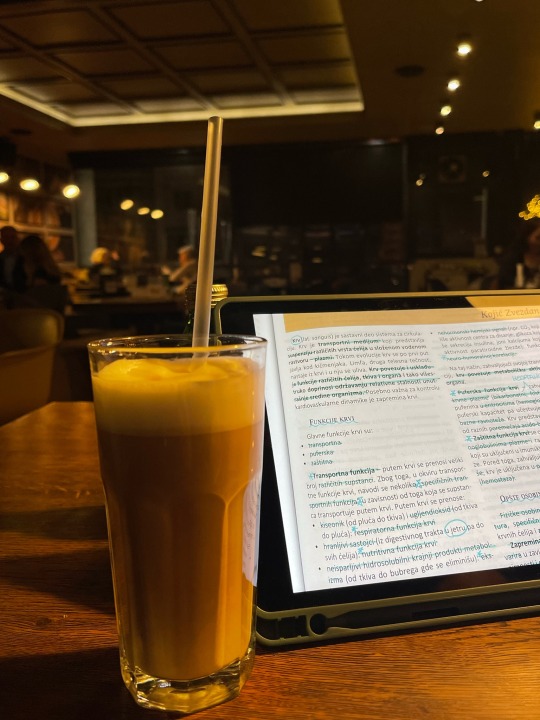#coffee blog
Explore tagged Tumblr posts
Text

1K notes
·
View notes
Text

Latte made by me.
#mine#tagged mine#barista photo#barista blog#barista#coffeehouse#coffeeshop#coffee house#coffee shop#coffee#rustic blog#coffee blog
176 notes
·
View notes
Text

#coffee maker#coffee mug#coffee cup#coffee#heart#coffee beans#coffee blog#coffee break#coffee brewing#latte#latte art#love#beautiful#pink#divine feminine#home & lifestyle#adorable#pink coquette#pink aesthetic#pink obsessed#pink heart#pink tumblr#pinkcore#pink blog#pink hair#soft#aesthetic#softcore#girly aesthetic#just girly posts
139 notes
·
View notes
Text

Luke Porter
357 notes
·
View notes
Text

Patiently waiting for sweater weather🤎
#cozy#autumn#fall#cozyvibes#autumn vibes#fall vibes#cozy aesthetic#autumn aesthetic#fall aesthetic#coffee#coffee vibes#coffee aesthetic#cozy weather#autumn weather#fall weather#sweater weather#cozy blog#autumn blog#fall blog#coffee blog#ber months#cozy mood#autumn mood#fall mood#cozy moodboard#autumn moodboard#fall moodboard#autumn days#fall days#cozycore
1K notes
·
View notes
Text

#study#study space#medicine#study aesthetic#study motivation#studyblr#studyspo#study blog#study notes#photoblog#coffeeblr#coffee blog
204 notes
·
View notes
Text






@museofreverie
been surviving uni with the help of caffeine ☕️
Unfortunately, it’s midterms szn again for me which means burnout szn AGAIN 🫠 I try my best to take care of myself this time and not fall back into my old patterns when it gets hard bc i just wanna survive uni i hate it so much rn. I still have a pile of papers and research to do, and honestly, I won’t be able to lock in without the help of caffeine and cookies :”) I owe it to them so much.
#rev's study corner#coffee#coffee blog#study blog#study aesthetic#studyblr#study motivation#study inspiration#studyinspo#blogging#girlblogging#caffeine#aesthetic#college#studying#uni#university#matcha#iced coffee#iced latte#latte#brown moodboard#light academia#academia aesthetic#academia#student life#student#my stuff
58 notes
·
View notes
Text


early morning ~
#coquette#it girl#girl blog#clean girl#that girl#cinnamon girl#clean girl lifestyle#motivation#rich girl#vanilla girl#girlblogging#rich girl aesthetic#rich girl lifestyle#coffee blog#cafe aesthetic#coffee girl#pink moodboard#pink blog#pink pilates girl#pink aesthetic#pink pilates princess#pink pinterest girl#pinterest girl#pumpkin spice latte#lizzy grant#lana del ray aka lizzy grant#lana del ray aesthetic#tumblr girls#college girl aesthetic#college life
128 notes
·
View notes
Text

🏥🩷
#dollette#dollcore#coquette#bpd#actually bpd#journaling#lifestyle#mental health#aesthetic#girlhood#girlblogger#girlblogging#nostaliga#soft#coffee blog#poetry blog#girl core#i’m just a girl#fussy sock vaca
7 notes
·
View notes
Text

Just went to Peaberry Coffee in Duncanville! Theyre known for their canned lattes, which is probably the best canned coffee ive had. The best flavor is the vanilla + oat milk. Pretty good if u need to stock your fridge or do a little grab n go. I went into their shop and tried the iced Americano. It has floral undertones which were nice and unique, especially since a lot of americanos you either get acid flavor or strong ass coffee flavor. It couldve been a little stronger though.
3.95/5
#coffee#coffee blog#aesthetic#art student#hipster#ouran high school host club#dark academia#study session#study space#dallas coffee
7 notes
·
View notes
Text

#autumn vibes#autumm#autumn blaze#fall#fall wallpaper#wallpaper#lockscreen#fall season#coffee#coffinshipping#coffee blog#winter#november#october#halloween
42 notes
·
View notes
Text

27 notes
·
View notes
Text

Flat white 🤎
#barista#barista blog#coffee#coffee shop#coffee blog#coffee house#barista photo#coffeehouse#coffeeshop#mine#tagged mine#uk barista#baristas#barista life#baristaposting#coffee break#coffees#coffetime#coffeshop
49 notes
·
View notes
Text

#i hope you are doing okay#coffee#coffee addict#coffee blog#student#college student#working from home
32 notes
·
View notes
Text




I know a coffee shop set up hates to see me coming 🪴☕️
Los Angeles, CA coffee shops 📍
#but first coffee#coffeshop#city life#girly aesthetic#coffee lover#coffee blog#coffee run#morning coffee#coffee aesthetic#coffee moodboard#iced latte#coffee time#Los Angeles#coffee set
4 notes
·
View notes
Text

Autumn days that include coffee and gloomy weather are my favorite🤎
#cozy#autumn#fall#cozyvibes#autumn vibes#fall vibes#cozy aesthetic#autumn aesthetic#fall aesthetic#coffee aesthetic#coffee blog#coffeeandbooks#booksbooksbooks#sweater weather#gloomyday#gloomy weather#autumn weather#fall weather#cozy blog#autumn blog#fall blog#cozymood#autumn mood#fall mood#cozy moodboard#autumn moodboard#fall moodboard#cozy days#autumndays#fall days
691 notes
·
View notes